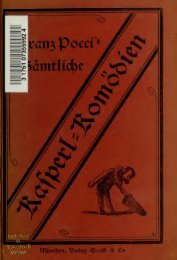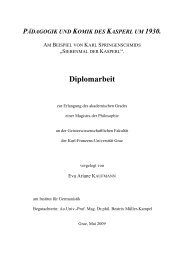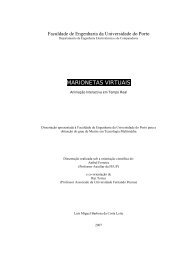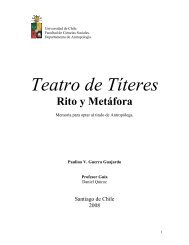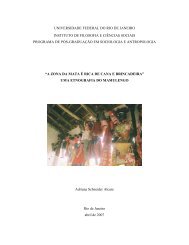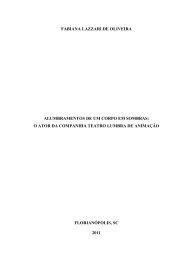ABSTRACT Title of Dissertation: THE PHENOMENOLOGY OF ...
ABSTRACT Title of Dissertation: THE PHENOMENOLOGY OF ...
ABSTRACT Title of Dissertation: THE PHENOMENOLOGY OF ...
Create successful ePaper yourself
Turn your PDF publications into a flip-book with our unique Google optimized e-Paper software.
crowd <strong>of</strong> Negro sinners.” 219 Brown combined the stereotypical dialect produced by<br />
minstrelsy and a simplistic worldview to characterize the Sinners through comic<br />
exaggeration. Noah warnes them <strong>of</strong> the coming flood and the Sinners deride the threat,<br />
assuring themselves that they “got umbrellas” and that Noah has “got watuh on de brain”<br />
(89). Brown seems to have connected race, ignorance, and wickedness thematically in<br />
this play. While Brown’s Noah indicates that all will be drowned, “both black and white<br />
alike,” the substance <strong>of</strong> the representation makes a clear connection between “the Negro”<br />
and an impure society.<br />
Later, a young black female, the future wife <strong>of</strong> Noah’s son Ham, defies her sister<br />
and joins the Ark. Brown seems to be building on the legend <strong>of</strong> Yonah, a servant girl <strong>of</strong><br />
the race <strong>of</strong> Cain, who stowed away on the Ark and later became wife to one <strong>of</strong> Noah’s<br />
sons. 220 If familiar with the legend, the audience would have expected Scram to secretly<br />
hide in the Ark, to be revealed later by Ham. If familiar only with scripture, the audience<br />
would be surprised by the adaptation, since in the scripture only Noah’s son’s wives were<br />
permitted on the Ark.<br />
Despite beginning the play with a racist implication, that the world must be<br />
purged <strong>of</strong> black humans to achieve moral purity, Brown establishes a structure that<br />
reverses many expectations. In Brown’s version, the young girl, Scram, loves Ham and<br />
will follow him even if he never returns her affection. Scram’s sister warns that it “ain’<br />
219 Forman Brown, “Mister Noah,” The Pie-eyed Piper and Other Impertinent Puppet Plays (New<br />
York: Greenberg Press, 1933), 89. From this point on, I will use parenthentical documentation for the<br />
lengthy selections from this play.<br />
220 The story is not even indicated in the scripture, but it is <strong>of</strong>ten used to explain why the sins <strong>of</strong><br />
humankind did not wholly disappear after the flood. The notion is that Yonah’s presence prevented the<br />
complete purification <strong>of</strong> the Earth.<br />
167



